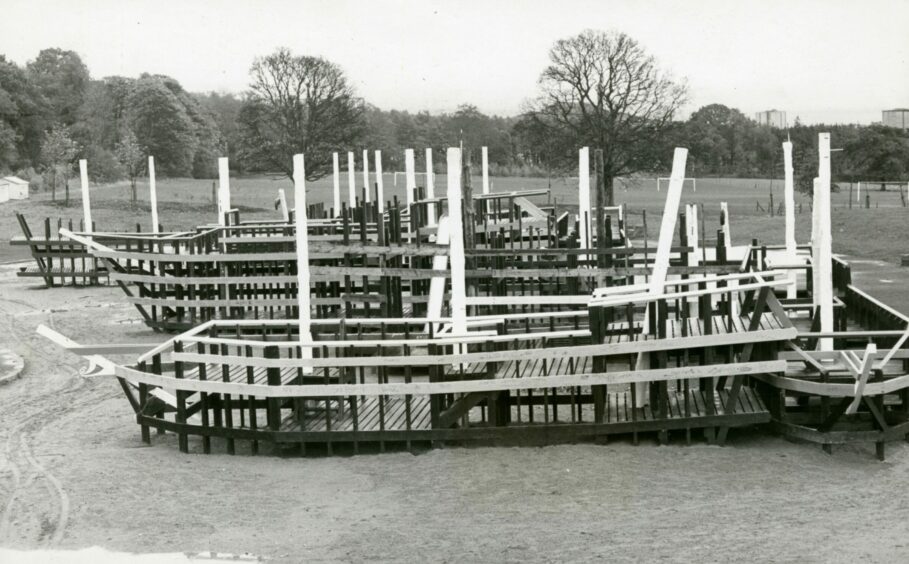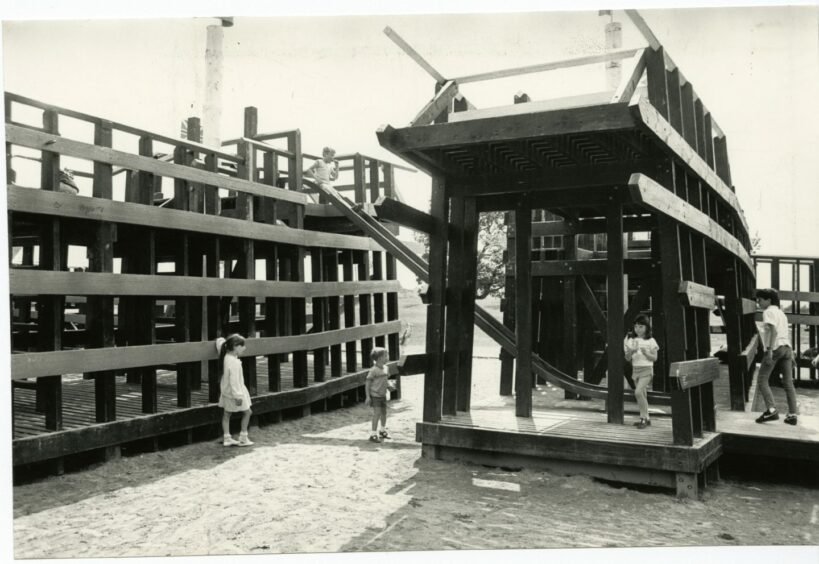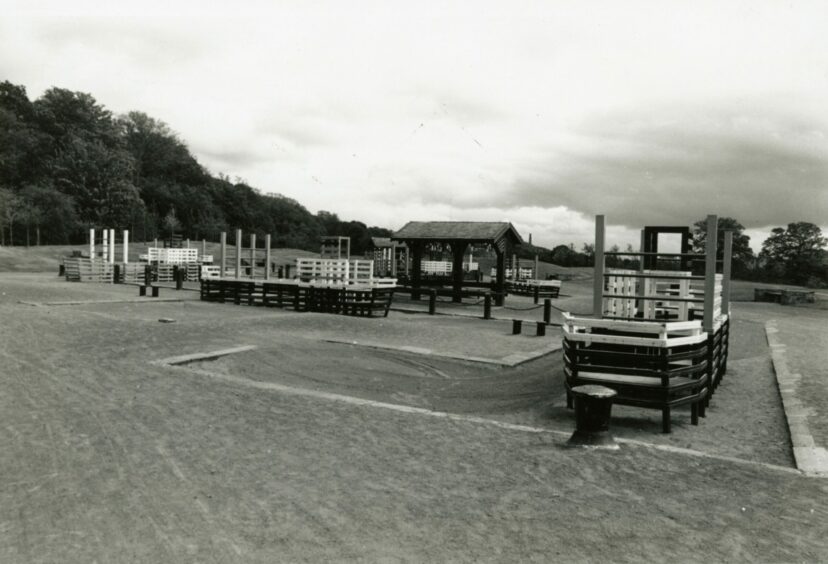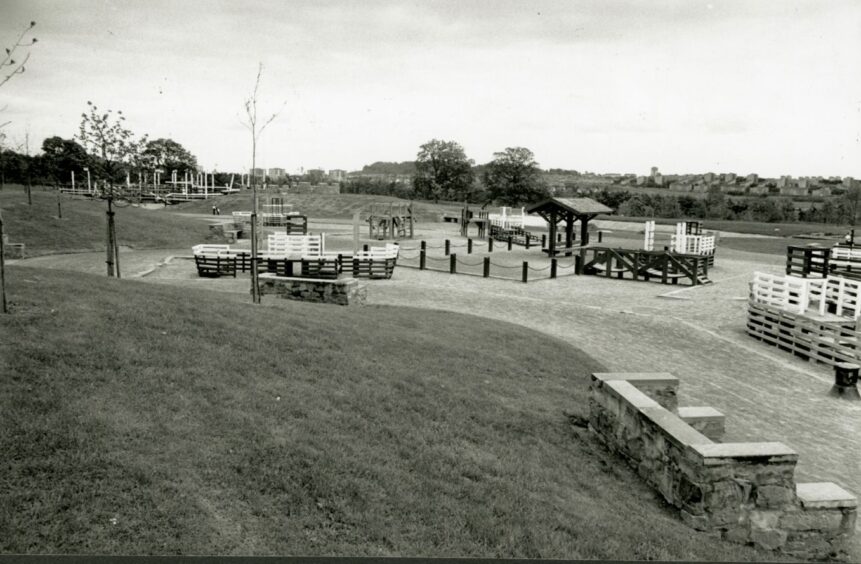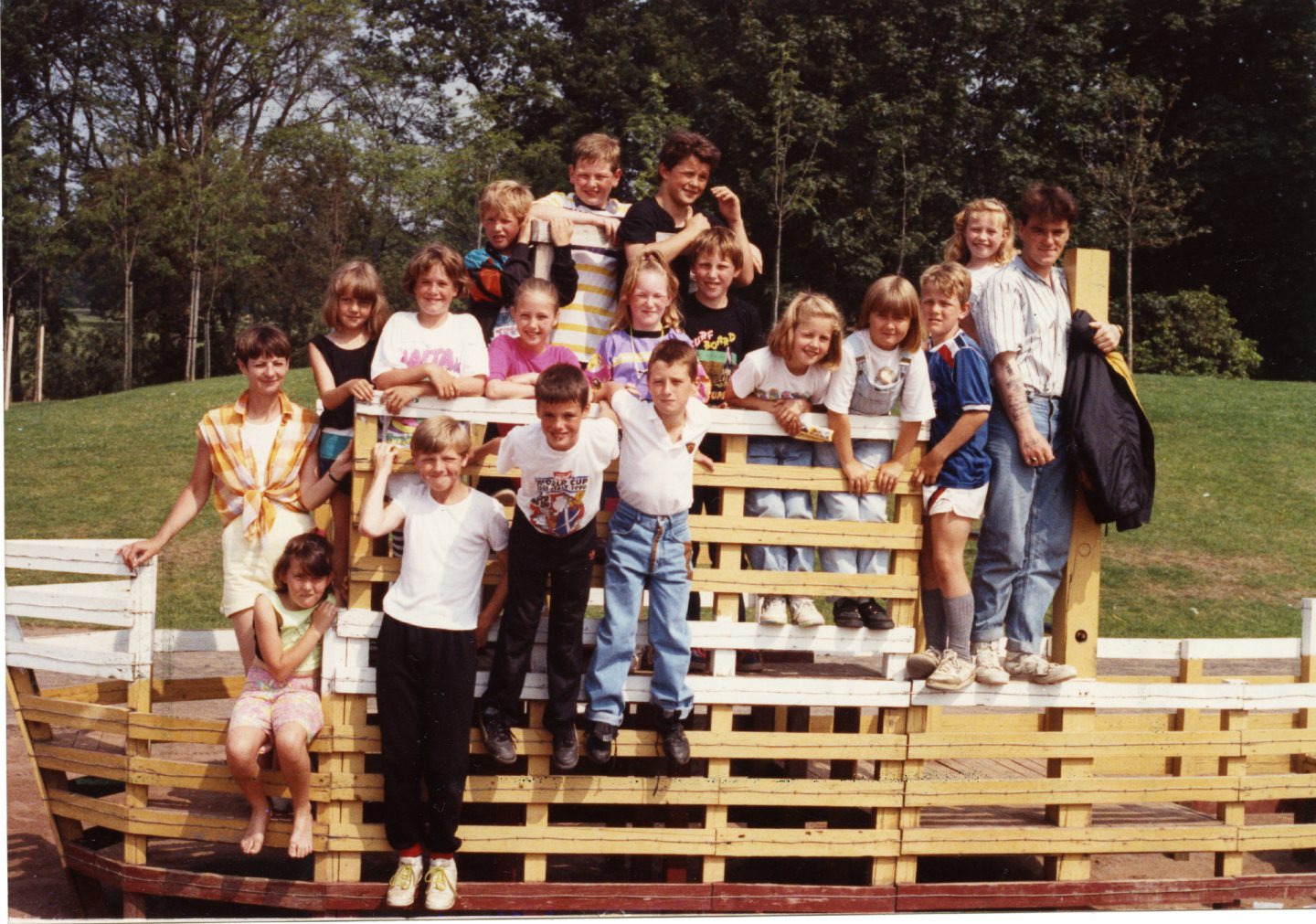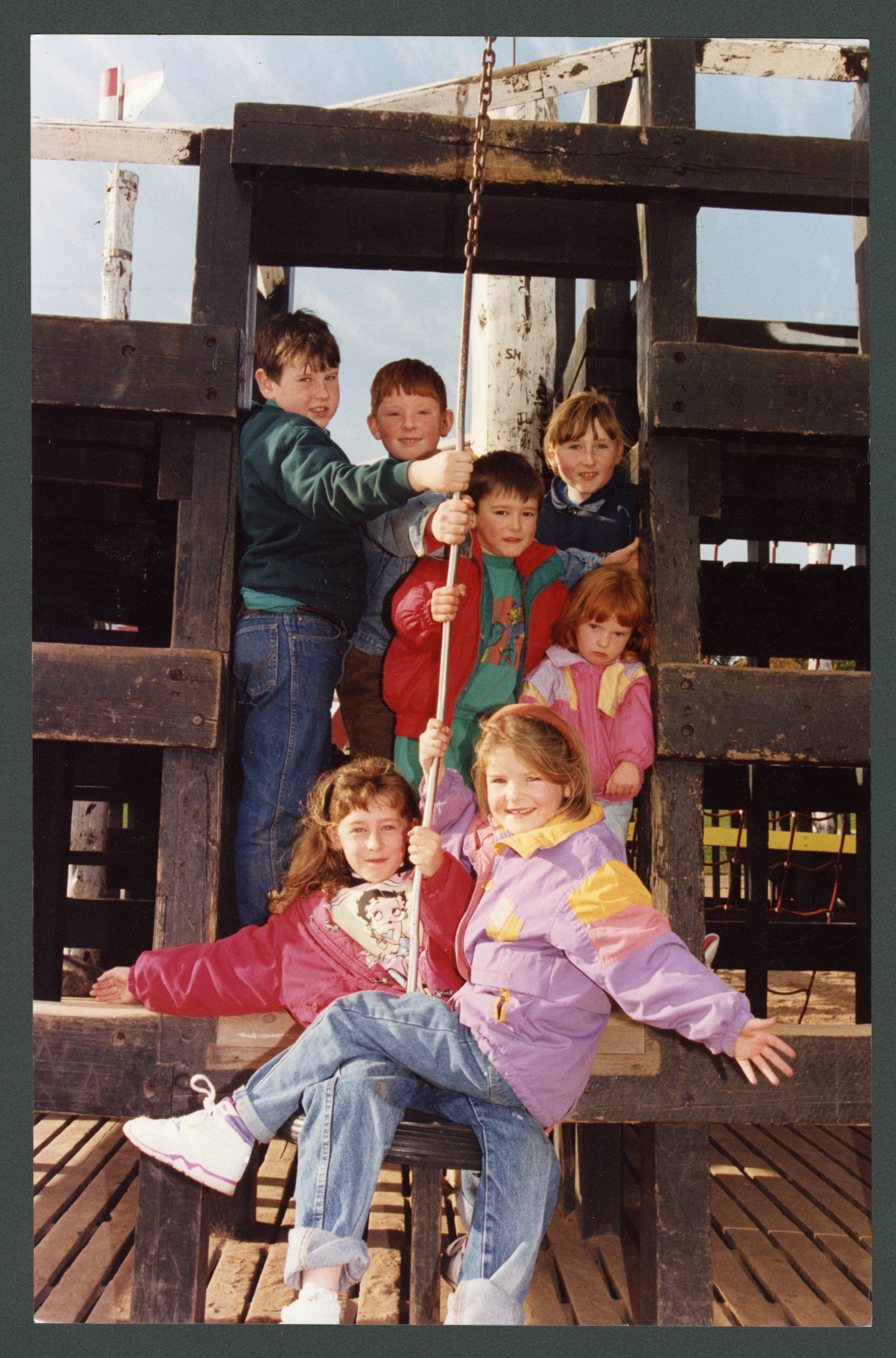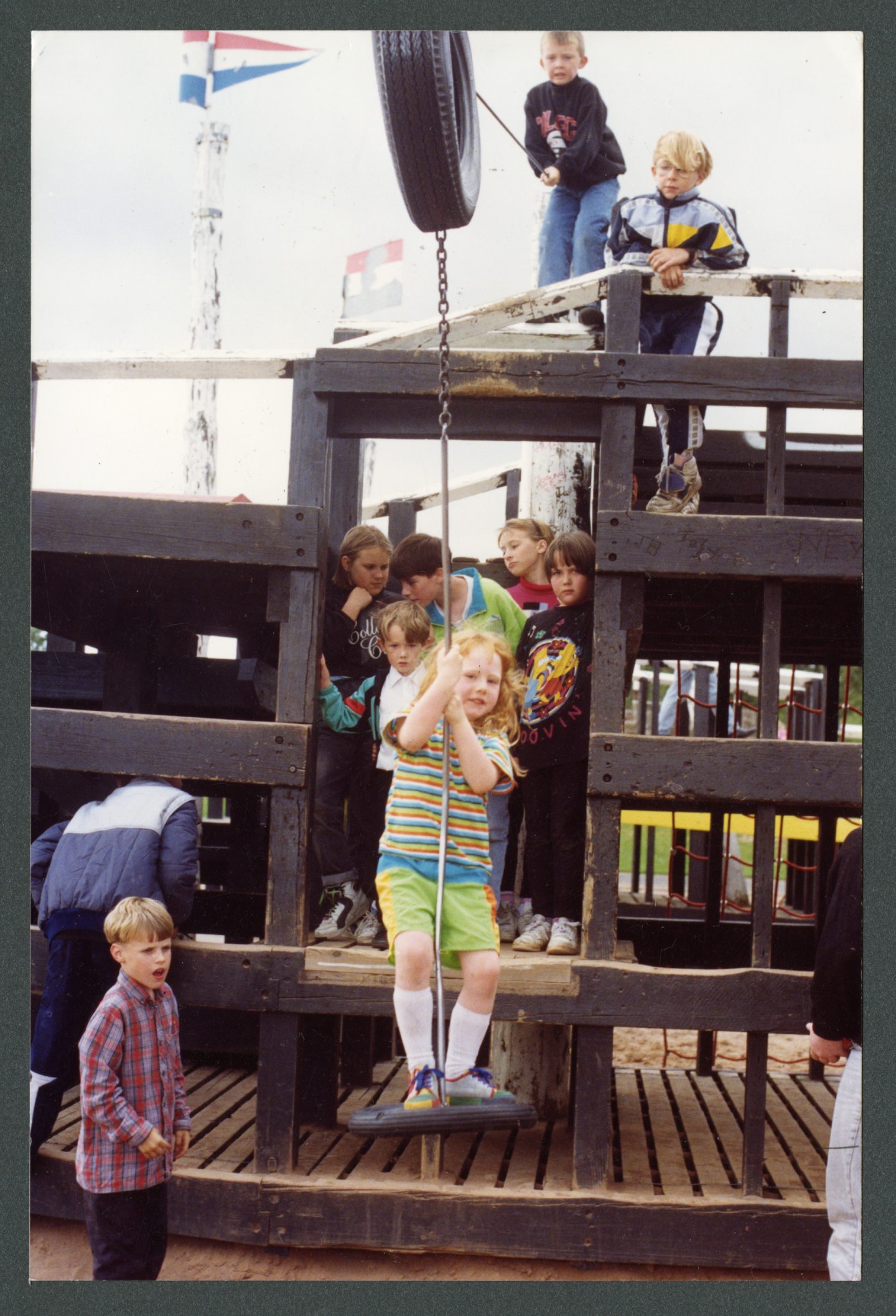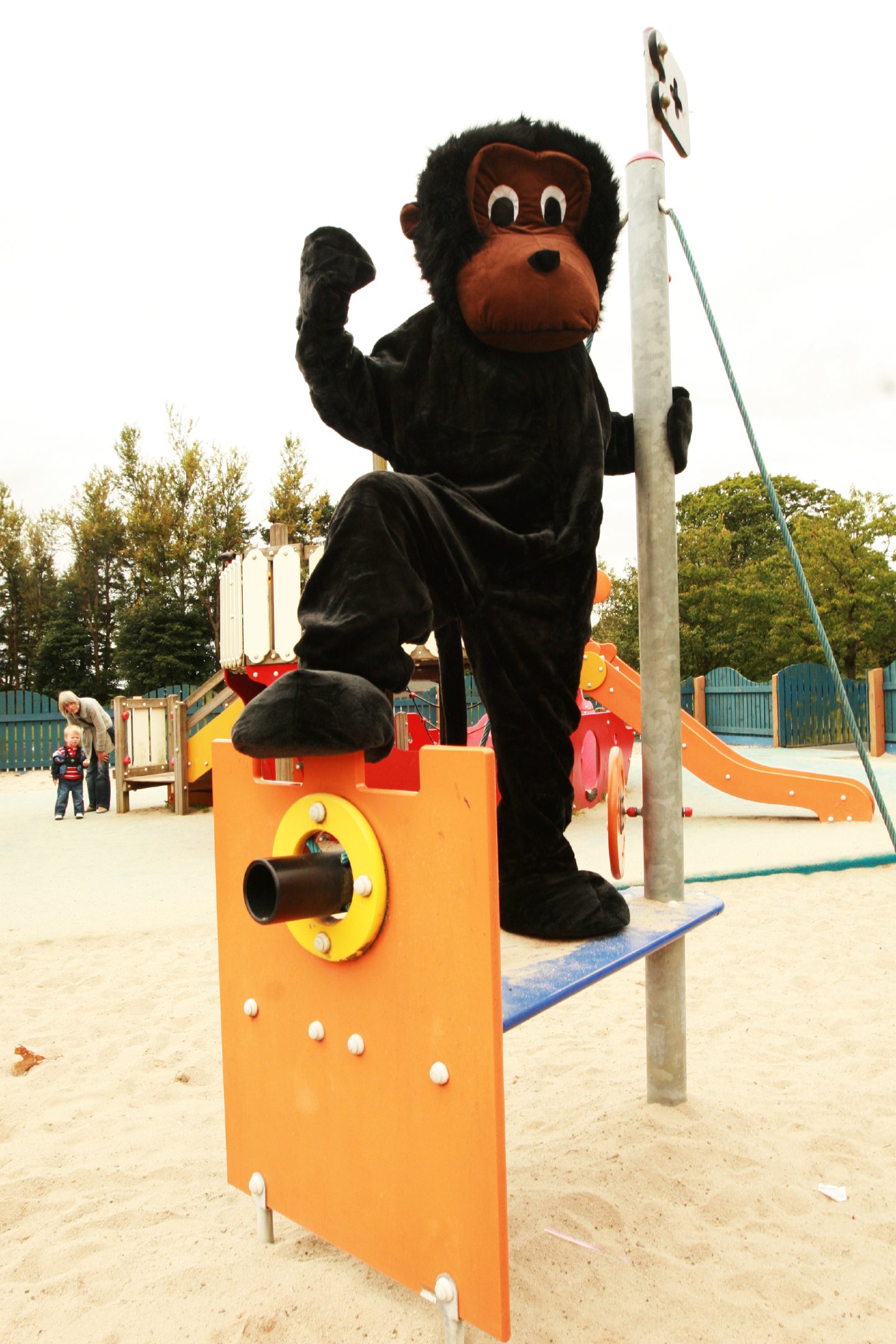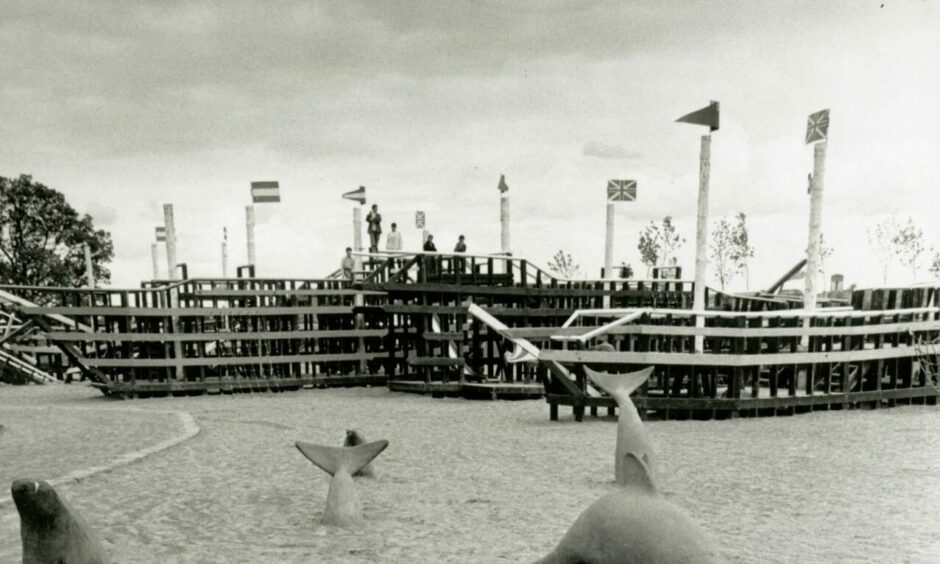
Wooden ships saluting Admiral Duncan’s victory at the Battle of Camperdown became Scotland’s best playground in the 1980s.
Dundonian Adam Duncan earned his place in the history books when he led a British fleet to victory over the Dutch allies of Napoleon off the coast of Holland in 1797.
The 400-acre Camperdown Park was named after the 1797 Battle of Camperdown which was also the inspiration for the £130,000 adventure playground.
The “man-made play park” was designed and funded by Dundee District Council’s parks department with labour provided from the Manpower Services Commission.
Work started 40 years ago with major earthworks which would create a boating lake.
The complex took two years to build, involving 60 MSC workers, before opening in 1985.
Generations of kids who grew up in Dundee still bear the scars from hanging and balancing on these enormous wooden structures surrounded by sand.
The Battle of Camperdown play complex was described by The Courier in 1986 as “an adventure space frame in the form of 18th Century man o’ war locked in battle”.
It was brilliant.
The kids absolutely loved it despite the scant safety features.
Little wonder.
This was their Alton Towers.
Two large flagships, six frigates and three half-sunk galleons in a sea of sand.
Not to mention shipwrecked sailors and rats in the holds, plus slides, aerial runways, scrambling nets, bridges, and a school of leaping dolphins.
These were heady days.
It was all great fun – until you found dog poo in the sand or a splinter sticking out of the ship.
You also needed to have a head for heights to get to the top.
Falling off would result in a bruise or graze at best and a broken limb at worst.
But who wants the low-risk playgrounds of today?
Dundee play park was hugely popular
Kids were having the time of their lives on the wooden ships, reliving the 1797 Battle of Camperdown, and this paid off for Dundee District Council’s parks department in 1986.
They won the top award as Scotland’s Playground of the Year.
The competition was run jointly by the National Playing Fields Association in Scotland and the Royal Town Planning Institute with Camperdown described as “imaginative”.
Lord Provost Tom Mitchell received the award of a plaque and a cup.
The wooden ships made Camperdown Park hugely popular and were complemented by a boating lake, kiddie cars and a refreshment kiosk which made a pretty penny.
Not everything was ship-shape and Bristol fashion, though.
A reader contacted The Courier’s Craigie column in June 1987 and was concerned at the historical accuracy of a guide table that explained to children about the battle.
He wrote: “Although it is acknowledged in one part that it involved the British navy and that a Dundonian Duncan was the admiral, the legend underneath the illustration of the battle indicates that one fleet is the English navy and the other is the Dutch.
“It may seem a small point but, if it is to be an educational piece for children, then I think ‘our’ fleet should be referred to as British.
“It is not correct for the fleet to be called the English fleet. After all, a proportion, perhaps about 10%, must have been Scottish.
“For one thing, at that time there was a substantial amount of press-ganging around the East Neuk.
“In the same way, I don’t expect the other side was exclusively the Dutch fleet. I think there were French among them, and probably others.
“The continental allies might be a better description.”
SNP councillor David Coutts went further in 1989 when he started a campaign to “restore the honour” of Admiral Duncan after the play area was extended.
Included in the improvements was a storyboard being installed for children that suggested Admiral Duncan “commanded the English fleet” at Camperdown.
Councillor Coutts said: “We’ve got used to the English claiming credit for all our achievements by instantly labelling successful Scots as British and keeping the successful Englishmen to themselves.
“But I couldn’t believe it when I saw we were prepared to give away a local hero like Admiral Duncan.
“And I’m sure he wasn’t the only Scotsman in the British fleet that day.”
Mob rule took hold and Camperdown Park pirate ships were attacked
Of course, nothing lasts forever.
Large numbers of youngsters with only boredom on the brain and mischief in mind vandalised the wooden ships in the 1990s until they were completely unsafe.
It was not unusual to find a burned-out car had been ploughed into them.
Things came to a head in May 1997 due to vandalism and a lack of funds for maintenance with all but two of the ships in the play area still in one piece.
The Courier reported: “It is some weeks since it was discovered the structure of one of the ships was badly damaged, leaving it potentially dangerous.
“It was fenced off and two chutes reached by climbing the ship removed.
“More recently another nearby ship was set on fire, badly burning half of the structure, meaning it too had to be fenced off.
“Despite the warmer weather attracting hundreds of families to the park and the summer holidays approaching, there is no sign of the ships being repaired as Dundee City Council still do not know the full extent of the damage.”
The wooden ships were repaired or replaced but time was running out.
They were finally removed by Dundee Council in 2003, which was welcomed by parents concerned about the “increasingly deteriorating condition of the ships”.
Would they ever return?
A £200,000 refurbishment project to redesign the play area would keep the broad theme of the previous park, which reflected on the 1797 Battle of Camperdown.
Dundee City Council said attractions such as a pirate ship and a tug boat would be installed with playground improvements taking place in phases over four years.
The installation of a toddlers’ zone, targeted at one to six-year-olds, opened in March 2003 and showman Charlie Horne arrived to plug the gap for the bigger kids.
The legendary carnival operator won the contract for what was described as “a family fun park” after responding to an appeal from the council asking for potential bidders.
There was a year’s trial period.
A good ding-dong ensued in the letters page of the Evening Telegraph.
One writer put it: “My eight-year-old grand-daughter just could not believe that her favourite park, Camperdown, has turned into a mini Blackpool.
“She kept repeating: ‘Gran, I don’t like carnivals.
“‘Where is my pirate ship and swings?’
“What on earth would make any councillor allow this lurid theme park take over what was once an adventure playground?”
All ship-shape once again at Camperdown Park
The second phase, creating a zone for eight to 14-year-olds, followed in 2004 and included extensive play equipment in a spiral of three units joined by net tunnels.
There would also be horizontal nets with three tubular slides, two scramble nets and suspension bridges, all located around a steel crow’s nest to give a pirate ship theme.
The central spiral would be ringed by other ship-themed units and a 20-metre cable slide with a series of panels to create an overall view of a naval battle.
The wooden ships were back.
The new play area has proved to be just as popular and the Battle of Camperdown is still being played out some 226 years after Admiral Duncan’s triumph on the high seas.
